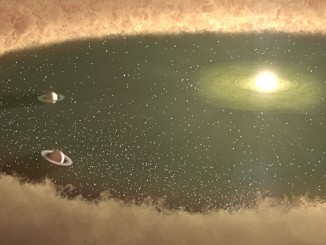Data collected by NASA’s Juno spacecraft inspires a captivating illustration of high-altitude electrical storms in Jupiter’s turbulent atmosphere, producing a phenomenon known as “shallow lightning.” While lightning on Earth originates in water-bearing clouds, shallow lightning is produced in clouds made up of ammonia and water. Other new findings from Juno suggest violent jovian storms may form slushy ammonia-rich hailstones, dubbed “mushballs,” that likely carry ammonia and water deep into Jupiter’s atmosphere.

Lightning flashes on Jupiter were first seen during NASA’s Voyager mission and were thought to originate in deep water clouds. But Juno’s close flybys “allowed us to see something surprising – smaller, shallower flashes – originating at much higher altitudes in Jupiter’s atmosphere than previously assumed possible,” said Heidi Becker, Juno’s Radiation Monitoring Investigation lead and lead author of a paper in Nature. “At these altitudes, the ammonia acts like an antifreeze, lowering the melting point of water ice and allowing the formation of a cloud with ammonia-water liquid. In this new state, falling droplets of ammonia-water liquid can collide with the upgoing water-ice crystals and electrify the clouds. This was a big surprise, as ammonia-water clouds do not exist on Earth.”



